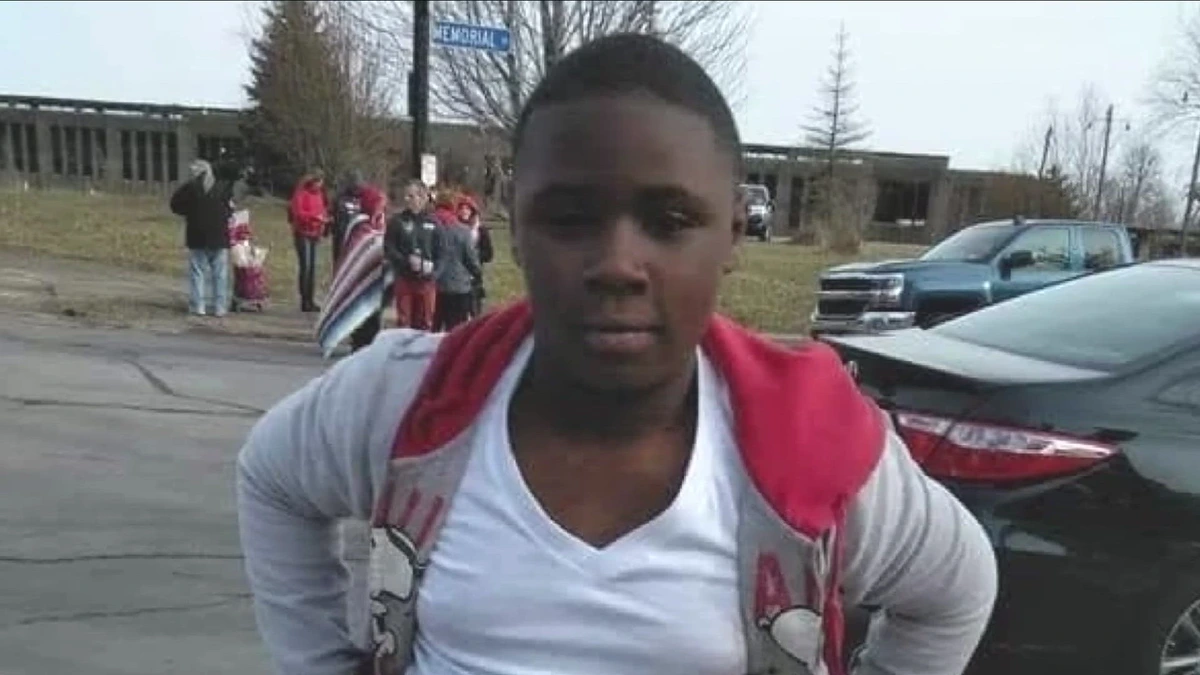
Justice for Jaylen Griffin
Some stories hit you differently. They creep under your skin and stay there. The case of Jaylen Griffin is one of those stories—a tale of institutional failure, family tragedy, and a community left searching for answers.
A Simple Errand, A Vanished Child
On August 4, 2020, 12-year-old Jaylen Griffin told his mother he was heading to a nearby convenience store in Buffalo's Central Terminal neighborhood. It was an ordinary summer day in an extraordinary time—the world was deep in the COVID-19 pandemic, but life carried on, especially for kids in neighborhoods where running small errands was part of growing up.
According to his mother, Joann Ponzo, Jaylen was walking their new puppy when he disappeared. "We live near a few stores and he would carry people's bags, and they'd give him change," she told People Magazine in a 2021 interview, painting a picture of a helpful young boy just starting to develop independence.
But Jaylen never came home.
Four Years of Questions
For nearly four years, Jaylen's family lived in that terrible limbo that families of missing children know too well—a state where hope and dread coexist in uncomfortable balance. Was he alive somewhere? Had something terrible happened? Why weren't authorities doing more to find him?
Community activists raised concerns that police had classified Jaylen as a "runaway" rather than a missing person in danger, a designation that they believe led to the investigation being de-prioritized and under-resourced from the beginning. This is a painfully common complaint in cases involving missing Black and Brown children, who often don't receive the same urgent response as their white counterparts.
While Jaylen remained missing, his family faced unimaginable additional tragedies.
Just three months after Jaylen's disappearance, his older brother Jawaan was shot and killed near the family home. He was only 18 years old. Then, in September 2023, Joann Ponzo—a mother who had lost one son to violence and another to an unknown fate—died of heart failure at age 49, never learning what had happened to her youngest child.
A Grim Discovery
Earlier this month, nearly four years after Jaylen vanished—just days before what would have been his 16th birthday—a maintenance worker made a horrific discovery while working in the attic of a multi-unit house at 107 Sheffield Avenue in Buffalo. The worker found human remains that were severely decomposed.
Dental records would later confirm what Jaylen's remaining family members had feared: the remains belonged to their long-missing boy.
Buffalo Police Commissioner Joseph Gramaglia stated that "The body that was located in the house had been there for a significant amount of time." The death is being investigated as a homicide, though authorities have not released details about the cause of death or any suspects.
The location where Jaylen was found is approximately five miles from his family home—a considerable distance that raises questions about how he ended up there. Was he taken? Did he go willingly? How did no one notice or report anything suspicious at the property for so long?
The House of Horrors on Sheffield Avenue
Perhaps the most disturbing aspect of this case is that Jaylen is reportedly the fourth deceased person to be found at 107 Sheffield Avenue in recent years. According to reports from the Daily Mail (which, though not always the most reliable source, appears to be one of the few outlets covering this detail), the property has a macabre history:
- One body was discovered on June 18, 2020, resulting in an arrest
- Another was found in September 2022, also leading to an arrest
- A third was discovered in August 2023
- And now, Jaylen's remains in May 2025
The property reportedly often houses individuals recently released from prison, though it is not officially designated as a halfway house. This raises serious questions about oversight, property management, and how multiple deaths could occur at a single address without triggering intensive investigation or intervention by authorities.
The idea that a child's body could remain undiscovered in an inhabited building for nearly four years is both heartbreaking and infuriating.
A Father's Grief and Determination
While Jaylen's mother and brother didn't live to learn his fate, his father, Brian Griffin, is left to seek justice for his son. At a recent vigil, Brian expressed mixed emotions about the discovery:
"I just wish she [Joann] was here with me at this present time, but I know that they're all together and it's a blessing... like I say, I got confirmation...It's still a long road to recovery; I'm just looking for justice now."
Those words—"I'm just looking for justice now"—capture the painful reality for families of murder victims. Finding Jaylen's remains provides some closure, but it only begins the next chapter of grief and the fight for accountability.
A Community Demands Answers
Buffalo's community activists who supported the search for Jaylen throughout the years are now rallying to ensure his case isn't forgotten again. They're asking difficult questions about the initial response to his disappearance:
- Why was a 12-year-old boy classified as a "runaway" rather than a missing endangered child?
- What investigative steps were taken in the days and weeks after he vanished?
- Were racial biases a factor in how authorities handled the case?
- How thoroughly was the Sheffield Avenue property investigated during previous incidents?
- What systems failed to protect Jaylen and possibly others?
The Reality of Missing Black Children
Jaylen's case highlights a painful reality in America: Black children who go missing often receive less media attention and fewer resources than their white counterparts. According to the Black and Missing Foundation, nearly 40% of missing children in the United States are Black, despite Black children making up only 14% of all children in the country.
The "missing white woman syndrome" identified by journalists extends to children as well, with missing white children often receiving immediate AMBER Alerts, national news coverage, and coordinated search efforts, while missing Black children are more frequently labeled as runaways or troubled youth who left voluntarily—classifications that result in less urgent responses.
For families like Jaylen's, this disparity can mean the difference between finding a child quickly and years of unanswered questions.
Sources
https://people.com/jaylen-griffin-missing-boy-remains-found-attic-8635463
